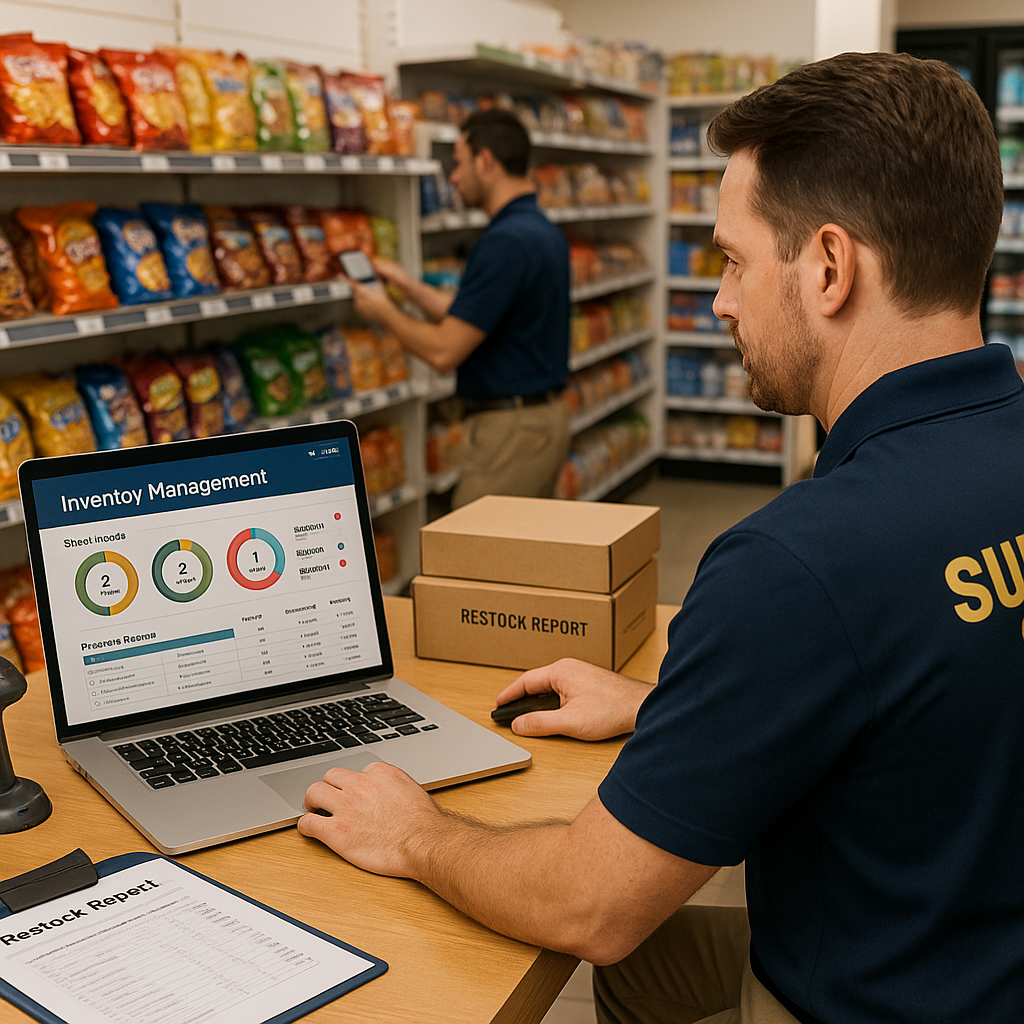How to Use Inventory Management Systems in a Convenience Store
Managing convenience store inventory requires balancing stock levels to meet demand without excess waste or cash tie-up. An inventory management system provides real-time tracking, automatic reorder points, sales trend analysis, and shrink tracking for smarter decisions.

Managing inventory in a convenience store can feel like walking a tightrope. You want enough stock to meet demand but not so much that products expire, take up valuable space, or tie up cash. An inventory management system (IMS) can help you keep your balance by tracking products in real time, forecasting needs, and helping you make smarter decisions.
Here’s how to use an IMS effectively in your daily operations.
1. Understand the System’s Core Functions
Every IMS is designed to help you track, manage, and control inventory. The best systems for convenience stores include:
- Real-time stock tracking so you always know what’s on hand
- Automatic reorder points to prevent stockouts
- Sales trend analysis to forecast demand
- Shrink and waste tracking to catch losses early
Before diving in, take time to understand the system’s dashboard, reporting tools, and settings so you can get the most out of it.
2. Set Up Accurate Product Data
Your IMS is only as good as the information you feed it. Make sure:
- Product descriptions match the actual items in your store
- Units of measure are consistent (e.g., cases vs. single units)
- Pricing is correct and updated
- Expiration dates are entered where applicable
This initial setup is the foundation for reliable tracking. Skipping it leads to inaccuracies that can throw off your ordering.
3. Integrate with Your POS System
When your IMS and POS (point-of-sale) system work together, every sale automatically updates your inventory counts. This integration reduces manual entry, minimizes errors, and ensures your numbers match your actual shelf stock.
If your systems aren’t connected, schedule regular data imports from the POS to the IMS to keep counts current.
4. Use the System to Identify Trends
Your IMS isn’t just a counting tool. It’s a decision-making tool. Review weekly and monthly reports to identify:
- Fast sellers that need frequent reorders
- Slow movers that might need a promotion
- Seasonal shifts in customer demand
- Products causing waste or shrink
These insights help you fine-tune ordering and stock levels.
5. Automate Reordering Where Possible
Most IMS platforms allow you to set minimum stock levels for each product. When counts drop below that number, the system generates a reorder alert or even places an order automatically.
This keeps your shelves stocked without over-ordering and frees up your time for other priorities.
6. Train Your Team to Use It Correctly
Even the best IMS will fail if staff aren’t using it properly. Train your team on how to:
- Scan products in and out accurately
- Record damaged or expired items
- Use the system to find product locations or check counts
A well-trained team means more accurate data and smoother operations.
7. Schedule Regular Audits
Technology is powerful, but physical counts are still essential. Conduct weekly spot checks and monthly full counts to catch discrepancies early. Use the findings to improve your processes and maintain data accuracy.
Bottom line: An inventory management system is more than a stock tracker—it’s a strategic tool for keeping your store efficient, profitable, and customer-ready every day. The key is consistent use, accurate data, and reviewing the insights it provides.





